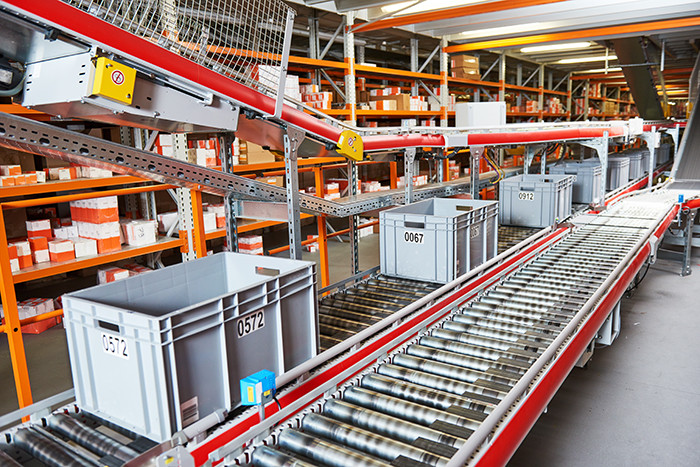There’s no denying that Amazon (and e-commerce more generally) has irrevocably changed the science of warehouse management. Warehouses, which were once seen as a necessary but uninspiring cost center, are now the lynchpin in many companies’ distribution strategies. Order turnaround has been cut from days to hours, so highly-organized warehouse processes are a must to any competitive retailer. Meanwhile, the cost of warehouse space, particularly near population centers, is skyrocketing, so efficient use of space has never been more important. There are two trends that will define warehouse management in the year to come: a continued move toward smaller, more urban spaces, and a push toward greater automation.
Over the past few years, commercial real estate agents across the developed world have reported the same trend: skyrocketing rents at smaller, more urban warehouses driven by ecommerce. “What we’re seeing in the small box portfolio is demand from all kinds of users,” says Jon Pharris, a distribution center developer in the Western US. “It could be small companies that can’t justify 400,000 square feet, so they’re putting up smaller DCs in several locations, manufacturers that now drop ship for their retail customers or larger companies that want 50,000 square feet in ten locations around the country to get closer to their customers in urban areas.”
It’s not just the size of warehouses that’s changing, but the function, as these smaller spaces operate exclusively as fulfillment centers. Pharris says, “I’m in Newport Beach, surrounded by 7-to-15 story office buildings, and… there’s this small building where Amazon stores the top 500 SKUs bought in Orange County. I’m shocked that more Fortune 500 and big box retailers aren’t doing that strategy.”
As the costs for warehouse space go up, companies have plenty to gain by decreasing the size of their footprints. Companies that undertake rigorous space utilization initiatives frequently find they can afford to scale back their square footage. This present an opportunity to explore other uses for the excess space, including renting it out or using it for more manufacturing. Aside from adapting warehouses to smaller spaces and more select SKUs, we’re also seeing the beginnings of a push toward multiple-story warehouses, such as the three-story space under construction in London which will boast 140,000 square feet of space per floor, and be truck accessible through a series of platforms.
The shift toward smaller warehouses has been a topic of discussion for several years, but size is only half the equation, since moving to a smaller space can only deliver rewards if it’s accompanied by a data-driven change in warehouse operations. According to one white paper, “One indisputable fact exists: Warehouse automation is one of the last areas where long-term costs can be significantly reduced.” While that statement might be slightly hyperbolic, it is true that automated data collection technology is more affordable than ever, and it can yield significant rewards. Better inventory tracking reduces waste and lost inventory. The increase in available data can facilitate better dock procedures, so a shipment is complete by the time a truck arrives. That’s crucial in today’s driver shortage, where carriers often walk away from shippers who waste their time.
Some businesses are taking bold leaps toward warehouse automation. China’s JD.com recently opened a warehouse capable of handling 200,000 orders a day, but which employs only four humans. Amazon is experimenting with automated pickers, though they suffered a setback when one of these machines punctured a can of bear repellent and sent 24 workers to the hospital. For most businesses, there’s no need to go to such lengths, at least not right away. Starting with barcodes to track inventory, sensors that can alert you to equipment issues before they arise, or just graduating from pen-and-paper systems can do wonders for efficiency and competitiveness.
In our 2018 year in review, we discussed the fact that 2019 may present a rare window for retailers that want to reclaim market share from Amazon, owing to a string of high-profile public controversies that have given the public pause. However, no business can hope to take advantage of this opportunity if they can’t provide customers with the same delivery speeds promised by Jeff Bezos and company. The return on investment is there for those who are ready to make their warehouses smaller, smarter, and closer to their customers.
If you have a warehousing need and are looking for a smaller platform to increase velocity to your customers, give us a call at 425-747-7914.



